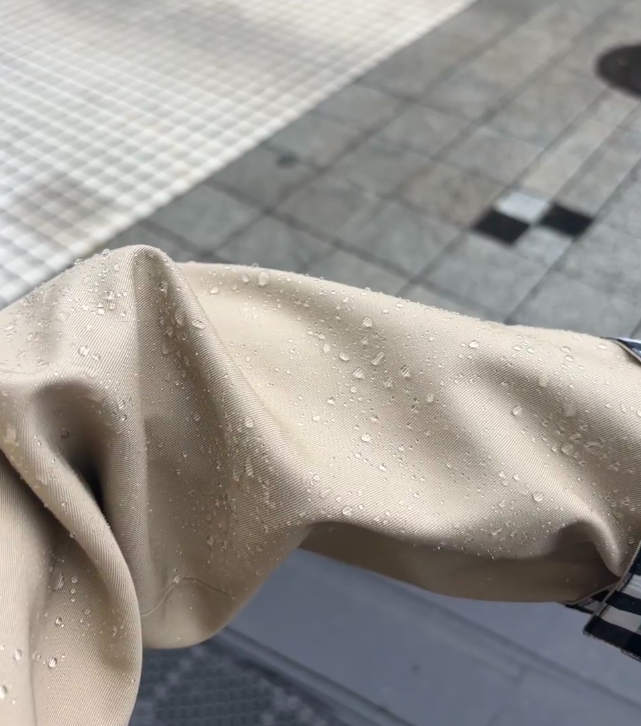Bu Fan Fabric Knowledge Classroom
Reading times:612 Update time:2025-03-05
Waterproof fabric refers to a fabric that has undergone special treatment or is made of a specific material, which can effectively block the penetration of moisture. This type of fabric is usually used for outdoor sports, rain gear, protective clothing, and other occasions that require resistance to rain or humid environments. Waterproof fabrics have high water resistance, which can keep clothes or equipment dry to a certain extent, prevent moisture from penetrating into the inner layer, and protect the body from moisture intrusion.
The principle of waterproof fabric:
The waterproof effect of waterproof fabrics usually comes from two main mechanisms:
1. Surface coating or membrane layer: The surface of waterproof fabric will be covered with a layer of waterproof coating or membrane, which can form a protective barrier to prevent water droplets from penetrating into the fibers of the fabric. Common coating materials include polyurethane (PU), polytetrafluoroethylene (PTFE, commonly known as Gore Tex film), etc.
2. Structure of the material itself: Some waterproof fabrics use natural or synthetic materials that already have waterproof functions, such as high-density polyester fibers, nylon, etc., which can effectively block the penetration of moisture.
Types of waterproof fabrics:
1. PVC waterproof cloth: PVC (polyvinyl chloride) waterproof cloth is a common waterproof material widely used in products such as raincoats, tents, and car canopies. It has strong waterproof properties, but is relatively heavy and not breathable.
2. Coating waterproof fabric: Some fabrics such as nylon or polyester fibers are coated with a waterproof coating on the surface to provide waterproof function. This type of fabric is usually lighter and more breathable than PVC, but its waterproof effect may be slightly weaker than PVC.
3. Gore Tex fabric: Gore Tex is a well-known waterproof and breathable fabric that not only has excellent waterproof properties, but also good breathability, suitable for high-intensity outdoor activities. It uses a special microporous structure to prevent moisture from penetrating, while also allowing sweat and other vapors to pass through, keeping it dry.
4. Teflon coated fabric: Teflon is a chemical substance commonly used for coating waterproof fabrics. It can form a waterproof film to prevent water droplets from penetrating, while also resisting stains and increasing the durability of the fabric.
5. Wax waterproof cloth: Some natural fabrics, such as cotton, can also achieve waterproof effect by applying wax or grease. Although this method is not as efficient as synthetic coatings, it can provide assistance for some mild waterproofing needs and is more environmentally friendly.
Characteristics of waterproof fabric:
1. Waterproof performance: Different types of waterproof fabrics have significant differences in waterproof performance, which is generally measured by the "water column height" (indicating the ability of the fabric to withstand water pressure). The higher the height of the water column, the stronger the waterproof performance.
2. Breathability: High quality waterproof fabrics usually have breathability to prevent sweat accumulation during wear and keep the body dry.

